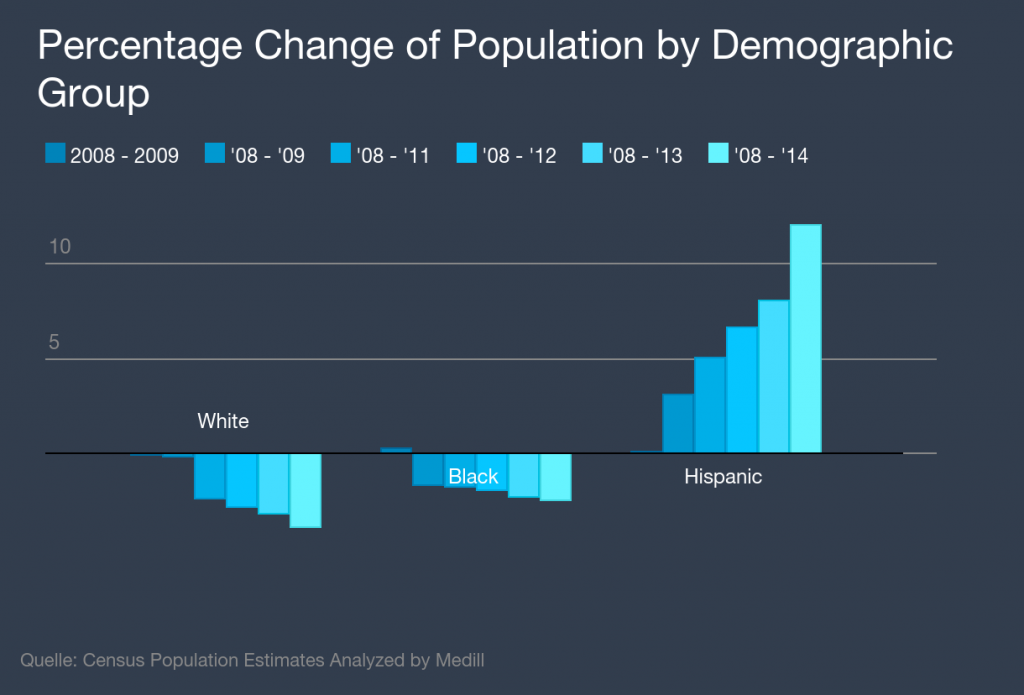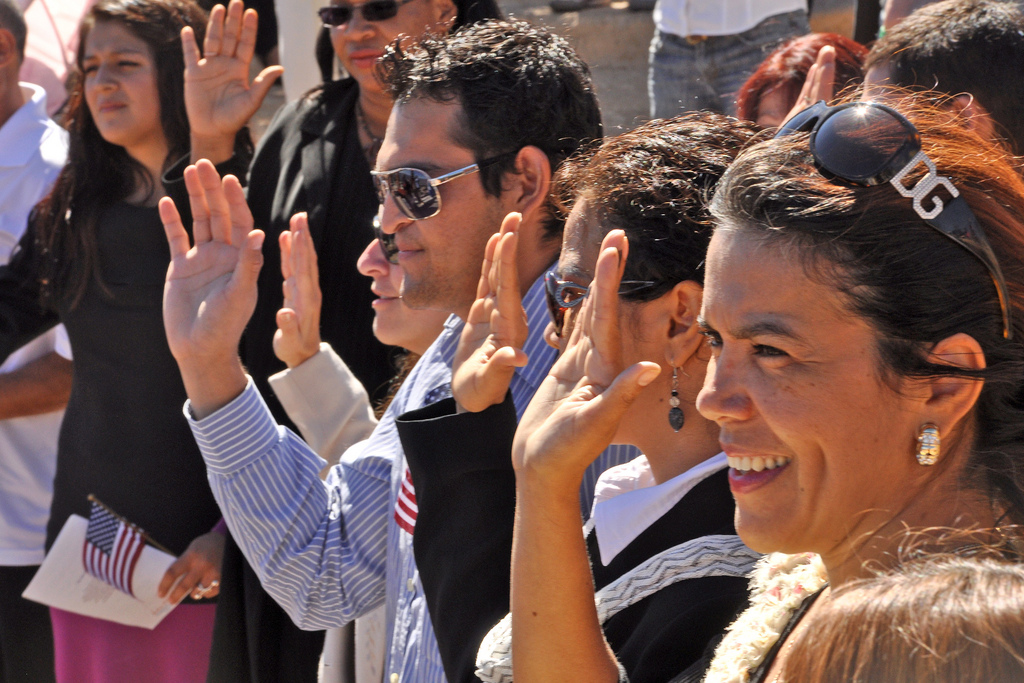By Hannah Rank
The consistently growing population of Hispanics in Illinois, paired with an unprecedented number of eligible voters, have local activists involved in Hispanic outreach looking for ways to engage this voting bloc.
“This is something we’ve been anticipating for a very long time,” Celina Villanueva, who runs voter engagement programming at the Illinois Coalition for Immigrant and Refugee Rights (ICIRR), said of the growing Latino constituency. “This is a voting bloc that really hasn’t flexed its muscles to the full capacity.”
According to the Pew Research Center, there were 708,000 eligible Hispanic voters in Illinois in 2008; for the 2016 election cycle there will be 951,000. That’s 34 percent more eligible voters over an eight-year period, and 44 percent of the total population of Hispanics in the state. The think-tank ranked Illinois the 11th highest state for percentage of Hispanic voters.

Martin Torres, senior policy analyst for the Latino Policy Forum, a Chicago-based organization that promotes Latino involvement in political decision-making, noted that though there are a growing number of eligible voters, compared with other demographic groups, turnout of Hispanic at the polls still lags. Torres said in the 2014 midterms, 65 percent of eligible non-Latino white voters and 69 percent of eligible non-Latino blacks cast a ballot, yet only 53 percent of eligible Latino voters cast a ballot.
Pew also noted that, nationally, the largest age bracket of eligible Hispanic voters – nearly half – are millennials (ages 18-36).
Both Torres and Villanueva credit young people as driving population growth and voter eligibility in Illinois as well.
“It’s the kids that are now growing up that are turning 18 years old that are moving into that space where they’re the citizens in the household,” Villanueva said.
“Latino children now account for one in four children under age five and about that percentage which is in pre-K through K-12,” Torres said. “In a couple of generations, you’re looking at a Latino population that’s almost a quarter or about a quarter of the state’s population.”
As of 2014, the Hispanic population accounted for 17 percent of the total Illinois population.

Villanueva focuses a good amount of her time on engaging these new, young, mostly second-generation voters with programs like the New Americans Democracy Project (NADP). She says the earlier you can get them invested in politics and specifically the issues affecting their communities, the more likely they are to participate in elections.
Villanueva says she also stations volunteers outside swearing in ceremonies so, immediately after becoming a citizen, people will become registered. She hopes in the future the process of new citizen voter registration will be automatized and synchronized.
As Villanueva explains, these initiatives ultimately stem from a desire to change Latino immigrants’ perceptions of democracy and the voting process – a system that in their home countries has often not served them well.
“You know, they might have been fleeing persecution because of political involvement or because of levels of education,” she said. “Or they might just be fighting for their lives and so, priorities are different. Democracy isn’t necessarily the priority – the priority is making money to feed my kids.”
Villanueva worries also about the lack of Latino representation in political office, and how that affects turnout.
“If folks don’t see themselves represented in the candidates that are running for offices, and truly see themselves represented, it’s a turnoff.” Villanueva said.
As an example, she cited Jesús “Chuy” Garcia’s campaign against Mayor Rahm Emanuel in the midterms last fall. “You had over 20,000 more Latinos come out to vote for a municipal election within the Chicago area, as opposed to the gubernatorial election a few months before that.”
Torres said that for those legislative districts that have a pretty substantial but not majority Hispanic population – meaning around 15 to 30 percent of the population – Latino voter turnout is “absolutely critical.” According Torres, of the 177 combined state legislative districts, around 59 fit those parameters.
“Every lawmaker has access to the voter file and every lawmaker knows which residents are voting,” Torres said. “So, it’s critical to Latinos across the state and those Latinos that live in these districts to get out, cast a ballot, be counted, be heard, and to show that this demographic is one that you should pay attention to.”


